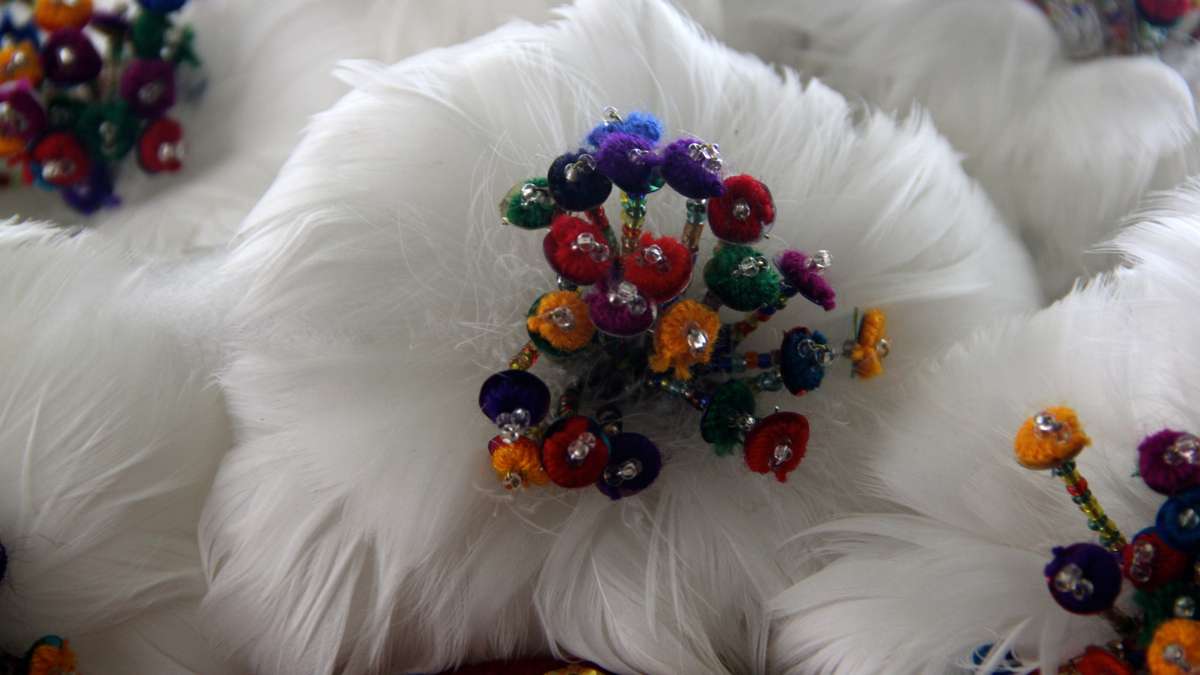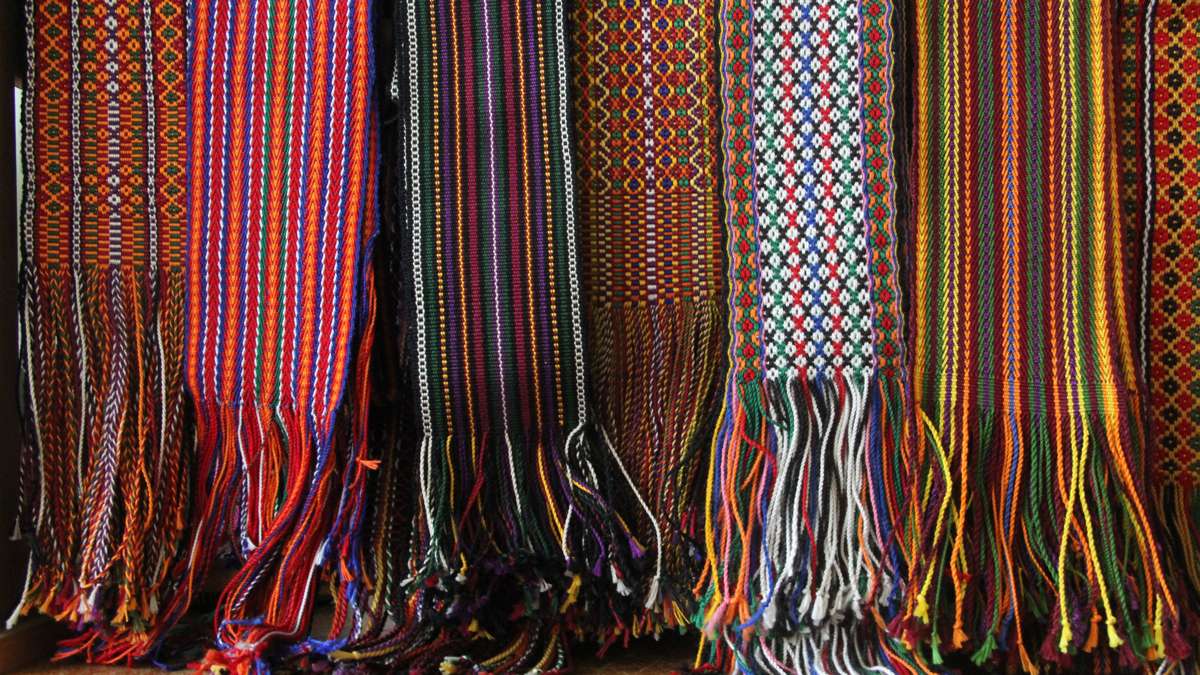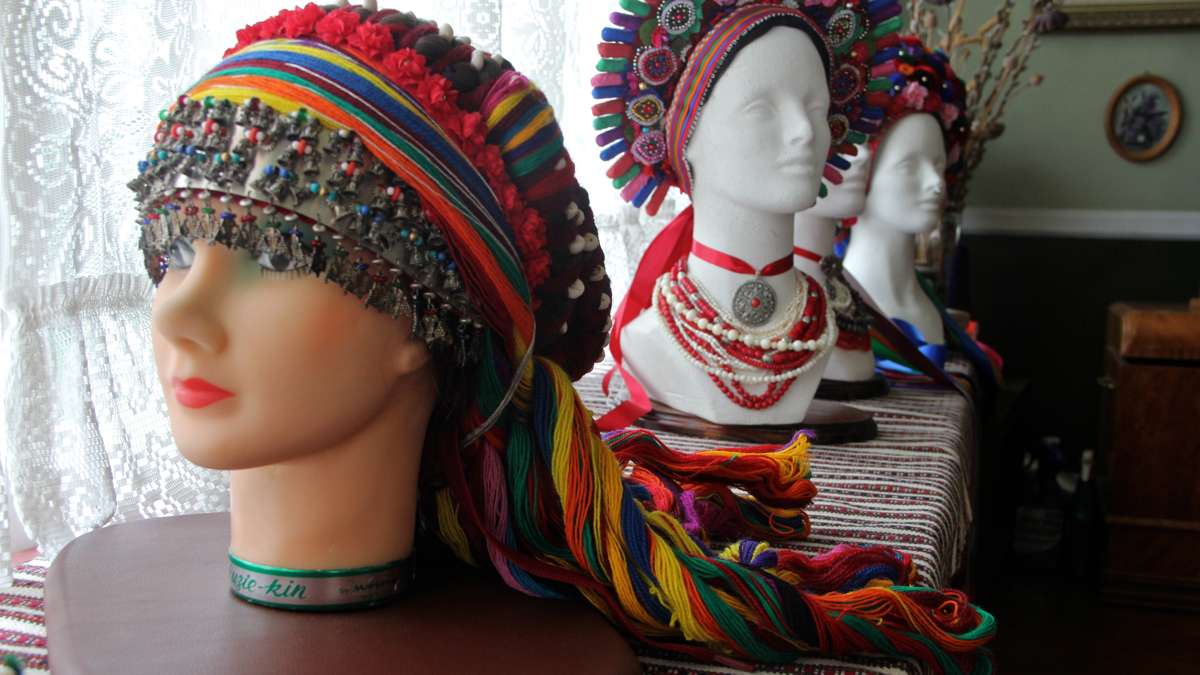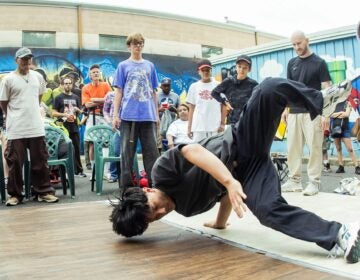Northeast Philly woman honored by NEA for reviving Ukrainian needlework [photos]
ListenVera Nakonechny never set foot in Ukraine until she was well into her forties. Born of Ukrainian parents in Germany, she was raised in Brazil before moving to Northeast Philadelphia as a teenager.
“When I came here I got involved with the Ukrainian community, and started doing Ukrainian work,” said Nakonechny in her parlor, surrounded by Ukrainian landscape paintings, traditional painted eggs, and her own embroidery. “They exposed us to everything. To the pure art — not just what was coming out of the Soviet Union.”
When Ukraine was absorbed into the USSR in 1922, the communist government actively suppressed regional art, in favor of promoting a more homogenous and contrived Soviet Style.
“The communists really did a disservice, If you were caught doing things, you were considered a nationalist. Many people got deported for doing their own art,” said Nakonechny. “For self-preservation, they didn’t teach. Now there is a generation that never got taught.”
Nakonechny has spent years searching out older women in remote villages throughout the Carpathian mountains who remember how to embroider and weave in their traditional style. Her work earned her a local Pew Fellowship in 2008, and this year she was awarded a National Endowment for the Arts Heritage Fellowship, one of only nine recipients of the annual award.
There is no one traditional Ukrainian style. Every village in every region developed its own unique weaving and embroidery techniques, often boasting that its style was more beautiful than that of the neighboring village.
Nakonechny is now preparing a set of bridal headpieces for an exhibition later this year at Wheaton Arts in Millville, N.J. There will be 30 headpieces, all radically different from each other.
Some have flower made from white goosefeathers, some have flowers made of shaved wood. Some have seashells woven into the hair, “when the African merchants came through, they would buy shells. It was very big to have shells” she said. Others are made of tiny yarn pompoms.
“In Poltava [Central Ukraine] it’s all done in pompoms. They do a lot of cut work, a lot of white on white,” said Nakonechny. “Where the Hutsul region [ in the Carpathain Mountains] does all of the colors. There are others that only do red, with a little bit of black or indigo in it.”
“Ukraine has 22 different techniques of embroidery. In that, there are 200-some stiches,” she said. “It’s complex.”
Nakonechny only started visiting Ukraine after 1991, when the country became independent. Nevertheless, the threat of persecution remained. She said many museums still hide some of their holdings to protect the objects from seizure.
“They still have that fear,” said Nakonechny. “What if they bring everything out, and it gets taken over again. They will lose it.”
For the most part, archivists and embroiderers welcomed Nakonechny’s interest in their work, and her eagerness to learn techniques. She has earned accolades not just for the excellence of her work, but her mission to teach the next generation everything she knows.
“The heritage award honors more than artistic excellence. It also honors the contributions individuals have made to a cultural tradition,” said Barry Bergey, the director of Folk and Traditional Arts at the NEA. “In Vera’s case, she’s a fount of knowledge about Ukrainian craft tradition. As a carrier of that heritage, she’s important both as a knowledge base and a teacher to others.”
“It’s such an honor. It’s the highest…” Nakonechny stopped because of a catch in her throat. “I’m sorry, I’m such a crier. It’s emotional. It’s the highest honor one can receive. I’m the second Ukrainian that has received this. It validates our work, our culture. And personally, to get it — there are no words. I feel like I got a gold medal for Ukraine.”
WHYY is your source for fact-based, in-depth journalism and information. As a nonprofit organization, we rely on financial support from readers like you. Please give today.















